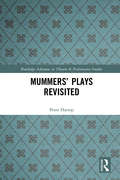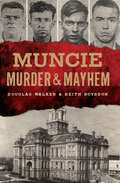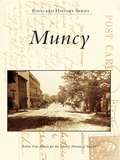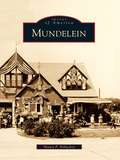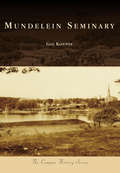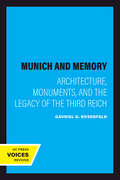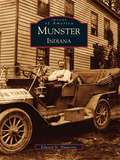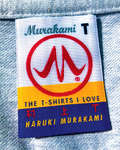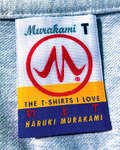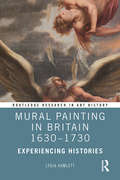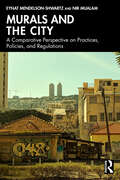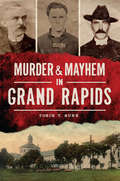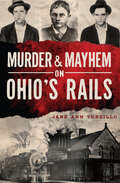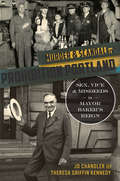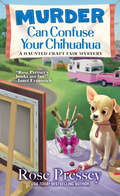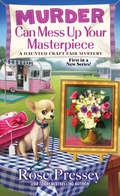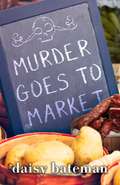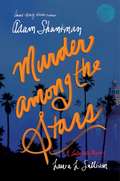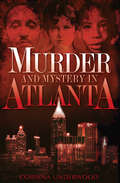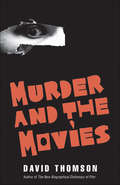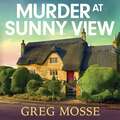- Table View
- List View
Mummers' Plays Revisited (Routledge Advances in Theatre & Performance Studies)
by Peter HarropPeter Harrop offers a reappraisal of mummers’ plays, which have long been regarded as a form of ‘folk’ or ‘traditional’ drama, somehow separate from the mainstream of British theatre. This fresh view of folk and tradition explores how mummers’ plays emerged in an 18th century theatrical environment of popular spouting clubs and private theatricals, yet quickly transformed into ‘traditionary’ drama with echoes of an ancient past. Harrop suggests that by the late 19th century the plays had been appropriated by antiquarians and folklorists, leaving mummer’s plays as a strangely separate and categorised form. This book considers how that happened, and the ways in which these late 19th century ideas were absorbed into the mummers’ plays, providing a new lease of life for them in the 20th and 21st centuries. Ideal for anyone with a specialised interest in this unique form, Mummers’ Plays Revisited spans recent work in theatre history, performance studies and folklore to offer a comprehensive and engaging study.
Muncie Murder & Mayhem (Murder And Mayhem Ser.)
by Douglas Walker Keith RoysdonThe authors of Wicked Muncie tell the city&’s lurid history in the true stories of its most infamous criminals and the lawmen who brought them down. Muncie epitomizes the small-town America of squeaky-clean 1950s sitcoms, but its wholesome veneer conceals a violent past. Public scandals and personal tragedy dogged the long, notorious life of Dr. Jules LaDuron. Baseball ace Obie McCracken met a tragic and violent end after joining the police force. A mother&’s love could not stop James Hedges from committing murder. The paranoid delusions of Leonard Redden hounded him until one day he carried a shotgun into a quiet classroom. Detectives Melvin Miller and Ambrose Settles chased a murderer across county lines in pursuit of justice. And newsman George Dale&’s showdown with the Klan prepared him for the political fight of his life. Douglas Walker and Keith Roysdon, authors of Wicked Muncie, introduce a new cast of characters from the city's notorious past. Includes photos!
Muncy (Postcard History)
by Robin Van Auken Muncy Historical SocietyMuncy, a small river town founded shortly after the French and Indian War, was the earliest European settlement in the West Branch Valley of the Susquehanna River. By 1769, land speculator Samuel Wallis had acquired more than 7,000 acres, so he sold much of this land to pioneers in search of a better way of life. By 1772, the West Branch Canal made Muncy a business thoroughfare and lumber boomtown. Like most Pennsylvania river towns, Muncy suffered great loss in the flood of 1889, which also devastated Johnstown. Another massive flood in 1894 sounded the death knell for the canal system. The railroad, which superseded the canal system throughout the United States, kept the local industry alive, although the port businesses disappeared. Through vintage postcards, Muncy depicts the varied past of this quiet town.
Mundelein
by Shawn P. KillackeyTucked away in the northeastern part of Illinois, just north of Chicago, is the village of Mundelein. Starting out in the mid-1800s as unsettled and unincorporated areas of land, this little village continued to form and grow throughout the years with many settlers, pioneers, and entrepreneurs who wanted to bring their ideas and dreams to this area, from Samuel Insull extending the Chicago-Milwaukee railroad into the community to Card. George Mundelein creating and constructing the St. Mary of the Lake Seminary, which brought half a million people on one day to gather in this unknown village. In turn, the village was named in the cardinal's honor and since its settlement has gone from a population of 500 to over 30,000.
Mundelein Seminary (Campus History)
by Gail KahoverAnyone who has driven through central Lake County, Illinois, has likely wandered across the entrance to Mundelein Seminary. The arched gateway is a teaser to the magnificence that lies within. The heavily forested grounds and sparkling lake provide a backdrop to the unique Colonial architecture of the buildings. The seminary was the dream of George William Mundelein, who told reporters as early as 1916 of his plans to build a seminary shortly after he was named archbishop of Chicago. Mundelein's vision was grand. He wanted a seminary to rival the best in the world, and he wanted it to be truly American. He succeeded. Today, Mundelein Seminary is the largest priesthood preparation program in the country, training priests for Chicago and 31 dioceses around the country and the world.
Mundo Sin Dueño
by Anthony KoontzSe Dios no existe, hay que crearlo. Este es un libro sobre poder, política, sexo, religión y ciencia. La presentación de un mundo futuro donde la economía está en declive y varias corporaciones luchan entre sí por el poder global, mientras nace una nueva tecnología revolucionaria, una deidad artificial dispuesta a ayudar a las personas a derrotar a los controladores del capital y el planeta. Todo lo que las teorías de conspiración nunca te dirán.
Munich and Memory: Architecture, Monuments, and the Legacy of the Third Reich (Weimar and Now: German Cultural Criticism #22)
by Gavriel D. RosenfeldMunich, notorious in recent history as the capital of the Nazi movement, is the site of Gavriel Rosenfeld's stimulating inquiry into the German collective memory of the Third Reich. Rosenfeld shows, with the aid of a wealth of photographs, how the city's urban form developed after 1945 in direct reflection of its inhabitants' evolving memory of the Second World War and the Nazi dictatorship.In the second half of the twentieth century, the German people's struggle to come to terms with the legacy of Nazism has dramatically shaped nearly all dimensions of their political, social, and cultural life. The area of urban development and the built environment, little explored until now, offers visible evidence of the struggle. By examining the ways in which the people of Munich reconstructed the ruins of their historic buildings, created new works of architecture, dealt with surviving Nazi buildings, and erected new monuments to commemorate the horrors of the recent past, Rosenfeld identifies a spectrum of competing memories of the Nazi experience.Munich’s postwar development was the subject of constant controversy, pitting representatives of contending aesthetic and mnemonic positions against one another in the heated battle to shape the city’s urban form. Examining the debates between traditionalists, modernists, postmodernists, and critical preservationists, Rosenfeld shows that the memory of Nazism in Munich has never been "repressed" but has rather been defined by constant dissension and evolution. On balance, however, he concludes that Munich came to embody in its urban form a conservative view of the past that was inclined to diminish local responsibility for the Third Reich.
Municipalities and Finance: A Sourcebook for Capacity Building (Municipal Capacity Building Series)
by Nick Devas Ian Blore Richard SlaterFinance is a critical issue for municipal governments around the world, and a major constraint on the delivery of pro-poor services at the local level. In many countries, decentralisation has brought the issue of municipal finance to the fore. This sourcebook provides a framework for analysing municipal finance capacity and ways of addressing financial constraints. The ideas come from real-life innovative practice in four countries - India, Brazil, Kenya and Uganda - with additional examples from elsewhere. Emphasis is given to how those innovations and improvements were developed and sustained. The book identifies a strategic framework for diagnosing municipal finance capacity and focusing financial goals. It applies the analysis to a number of critical areas of municipal finance including local taxes, charges for services, budgeting, cost control, accounting reforms and investment finance. This is the third in a series of capacity-building sourcebooks that includes Focusing Partnerships: A Sourcebook for Municipal Capacity Building in Public-Private Partnerships and Municipalities and Community Participation: A Sourcebook for Capacity Building.
Munster, Indiana
by Edward N. HmurovicMunster, Indiana was referred to as Strathmore on early railroad maps as workers would tirelessly tie "one strath more." When a young man from the Netherlands by the name of Jacob Munster opened Munster's General Store, complete with a small U.S. Postal Station in the back, more residents populated the area, and the "Town of Munster" was founded in 1907.Munster, Indiana is a photographic tour of the places, people, and events that have shaped the Town of Munster from the 1850s onward. Nearly 250 historically significant images capture the town's growth from a simple farming community to the bustling town it is today.
Murakami T: The T-Shirts I Love
by Haruki MurakamiThe international literary icon opens his eclectic closet: Here are photographs of Murakami&’s extensive and personal T-shirt collection, accompanied by essays that reveal a side of the writer rarely seen by the public. Many of Haruki Murakami's fans know about his massive vinyl record collection (10,000 albums!) and his obsession with running, but few have heard about a more intimate passion: his T-shirt collecting.In Murakami T, the famously reclusive novelist shows us his T-shirts—from concert shirts to never-worn whiskey-themed Ts, and from beloved bookstore swag to the shirt that inspired the iconic short story "Tony Takitani." These photographs are paired with short, frank essays that include Murakami's musings on the joy of drinking Guinness in local pubs across Ireland, the pleasure of eating a burger upon arrival in the United States, and Hawaiian surf culture in the 1980s. Together, these photographs and reflections reveal much about Murakami's multifaceted and wonderfully eccentric persona.
Murakami T: The T-Shirts I Love
by Haruki MurakamiThe international literary icon opens his eclectic closet: Here are photographs of Murakami&’s extensive and personal T-shirt collection, accompanied by essays that reveal a side of the writer rarely seen by the public. Many of Haruki Murakami's fans know about his massive vinyl record collection (10,000 albums!) and his obsession with running, but few have heard about a more intimate passion: his T-shirt collecting.In Murakami T, the famously reclusive novelist shows us his T-shirts—from concert shirts to never-worn whiskey-themed Ts, and from beloved bookstore swag to the shirt that inspired the iconic short story "Tony Takitani." These photographs are paired with short, frank essays that include Murakami's musings on the joy of drinking Guinness in local pubs across Ireland, the pleasure of eating a burger upon arrival in the United States, and Hawaiian surf culture in the 1980s. Together, these photographs and reflections reveal much about Murakami's multifaceted and wonderfully eccentric persona.
Mural Island
by Katie YamasakiA young artist discovers a place to express themselves and the joy of an art community in this evanescent picture book. Kengi drew. Fast, busy, everywhere their hands could reach and feet could travel. On the front steps, inside the fridge, across the bathroom mirror, atop the cafeteria tables, even on the roll of toilet paper. Kengi’s parents are frustrated, and their principal tells them they need to stop. But Ms. Beatriz tells Kengi there’s somewhere in the neighborhood that they should visit. When Kengi arrives at Mural Island, they discover a place where people can paint safely, freely, and joyfully. So Kengi does. But they’re not the only one painting each day, and soon Kengi recognizes that their art doesn’t have to be permanent to be monumental. With an electric, eye-catching new style from acclaimed picture book creator Katie Yamasaki, Mural Island celebrates art, expression, and the communities that cherish both.
Mural Painting in Britain 1630-1730: Experiencing Histories (Routledge Research in Art History)
by Lydia HamlettThis book illuminates the original meanings of seventeenth- and early-eighteenth-century mural paintings in Britain. At the time, these were called ‘histories’. Throughout the eighteenth century, though, the term became directly associated with easel painting and, as ‘history painting’ achieved the status of a sublime genre, any link with painted architectural interiors was lost. Whilst both genres contained historical figures and narratives, it was the ways of viewing them that differed. Lydia Hamlett emphasises the way that mural paintings were experienced by spectators within their architectural settings. New iconographical interpretations and theories of effect and affect are considered an important part of their wider historical, cultural and social contexts. This book is intended to be read primarily by specialists, graduate and undergraduate students with an interest in new approaches to British art of the seventeenth and eighteenth centuries.
Murals and the City: A Comparative Perspective on Practices, Policies, and Regulations
by Eynat Mendelson-Shwartz Nir MualamThis book provides a cross-urban account on murals, street art, and public art in cities around the globe. It reviews the rules, policies, and regulations that frame how murals and street art are managed across a range of cities and contexts. Murals and street art serve as dynamic stages for communities and individuals with multiple and sometimes opposing identities, with the potential to cause disturbance and conflict. The book investigates the challenges they present to cities and city administrations, and the policies and practices that are crafted to address them. The global landscape of today's mural policies is discussed comparatively across a range of cities, and the impact of written rules, unofficial practices, and institutional arrangements on city spaces, walls, and surfaces is examined. An important contribution to this growing field, the book will appeal to students, practitioners, and scholars with an interest in public art, municipal governance, public space management, cultural policy, and urban design.
Murder & Mayhem in Grand Rapids (Murder & Mayhem)
by Tobin T. BuhkWhile the River City is known for its history of furniture making, it also has a sinister side. Jennie Flood was a widow with a get-rich scheme that involved a shotgun and an insurance application. Reverend Ferris went undercover in his war against the city's purveyors of vice. The police rounded up the usual suspects in an attempt to solve the infamous 1921 bank heist that led to the slaying of two detectives. And the death of a teenager exposed "Aunty" Smith and her dangerous side business conducted in the shadows. Author Tobin T. Buhk delves into the colorful characters of Grand Rapids' past and the heinous crimes they committed.
Murder & Mayhem on Ohio's Rails (Murder And Mayhem Ser.)
by Jane Ann TurzilloAll aboard for a breakneck trip into history, as the author of Wicked Women of Ohio details the Buckeye State&’s most daring train holdups. Ride Ohio&’s rails with some of the bravest trainmen and most vicious killers and robbers to ever roll down the tracks. The West may have had Jesse James and Butch Cassidy, but Ohio had its own brand of train robbers. Discover how Alvin Karpis knocked off an Erie Railroad train and escaped with $34,000. Learn about the first peacetime train holdup that took place in North Bend when thieves derailed the Kate Jackson, robbed its passengers and blew the Adam&’s Express safe. Make no mistake—railroading was a dangerous job in bygone days. Includes photos! &“Ohio was plagued by train bandits, too, and some of them were shockingly violent. Journalist Jane Ann Turzillo has researched 10 interesting cases for her book.&” —Akron Beacon Journal
Murder & Scandal in Prohibition Portland: Sex, Vice & Misdeeds in Mayor Baker's Reign (True Crime)
by Jd Chandler Theresa Griffin KennedyThe 1917 election of Mayor George Luis Baker ushered a long era of unscrupulous greed into Portland government. While supposedly enforcing prohibition laws, Baker ordered police chief Leon Jenkins to control and profit from the bootlegging market. Baker filled city coffers and his friends' pockets with booze-soaked cash while sensational headlines like the 1929 affair between policeman Bill Breuning and informant Anna Schrader scandalized the city. Maligned in the press, Schrader executed a bitter campaign to recall the mayor. In 1933, a hired gunman murdered special investigator to the governor Frank Aiken a day before he would have filed a report on corruption in the city government. Authors JD Chandler and Theresa Griffin Kennedy unearth the salacious details of Baker's crooked administration in a revelatory account of prohibition in the Rose City.
Murder Can Confuse Your Chihuahua (A Haunted Craft Fair Mystery #2)
by Rose PresseyThere&’s a killer in the picture . . . Celeste Cabot has a flair for painting—and a touch of paranormal talent too. She&’s just arrived to sell her artwork at a big craft fair in North Carolina, complete with rides, games, and deep-fried everything. But the sunny landscape takes on a darker hue when her Chihuahua, Van Gogh, leads her to the riverbank—and to a body that was definitely not part of her design. With help from a handsome fellow artist, Celeste sets out to draw the brazen killer onto her canvas. She&’ll need to balance the victim&’s past, a suspected love triangle, and a long-ago accident—and also consult with a medium and a spirit—to try to paint a murderous fiend into a corner . . . Includes tips and recipes! Praise for Rose Pressey and the Haunted Vintage Mysteries &“An amusing paranormal cozy, filled with quirky characters and fashion, along with a few ghosts.&” —Library Journal "A delightful protagonist, intriguing twists, and a fashionista ghost combine in a hauntingly fun tale." —Carolyn Hart &“Snappy dialogue and well-drawn characters in a lovely small-town setting." —Jenn McKinlay Visit us at www.kensingtonbooks.com
Murder Can Mess Up Your Masterpiece (A Haunted Craft Fair Mystery #1)
by Rose PresseyHaunted art is in the eye of the beholder . . . Artist Celeste Cabot welcomes the chance to show her paintings at a craft fair in her hometown of Gatlinburg, Tennessee, where she and her Chihuahua, Van Gogh, can park her vintage Shasta trailer and sell her creations, too. Unfortunately, her sales take a hit when a customer returns a painting, claiming it’s haunted. When a fellow vendor discovers images hidden in Celeste’s artwork—and a ghost pays her a late-night visit—she’s shocked to realize she has psychic abilities. After the grumpy manager of the craft fair is found with a knife in his neck, Celeste’s brushes with the paranormal may help fill in the picture—and make sure the wrong person doesn’t get framed . . . Praise for Rose Pressey and the Haunted Vintage Mysteries “Rose Pressey’s books are fun!”—Janet Evanovich “Chock full of ghosts, cats possessed by spirits, a handsome police officer boyfriend, and tips on the afterlife and vintage shopping.” —Kirkus Reviews “An appealing protagonist who is as sweet as a Southern accent.” —Library Journal “A sheer delight.”—Kate Carlisle
Murder Goes to Market
by Daisy BatemanIf you had asked computer programmer Claudia Simcoe what she expected to come of her leaving San Francisco for the California coast to open a farm-to-table marketplace, &“assembles a mismatched team to investigate a murder&” would not have been her first guess. Lori Roth is one of the tenants of the market, or she had been until Claudia learned that the hands making her &“hand-dyed&” textiles belong to overseas factory workers. Claudia terminates Lori&’s lease, but her hopes that this will be the last she sees of her problem tenant are dashed when she arrives at the marketplace the next morning to find Lori dead, hit over the head with a jar of pickles and strangled with a cheese wire. The police chief thinks Claudia looks like an easy pick to be the killer, and he closes the marketplace to put the pressure on her. So, Claudia has no choice but to solve the mystery herself. Relying on the tech skills from her previous life and some help from her quirky new friends, Claudia races to save her business and herself before the killer adds her to the region&’s local, artisanal murders.
Murder Most Fowl: A Meg Langslow Mystery (Meg Langslow Mysteries #29)
by Donna AndrewsA Shakespearean twist on the long-running Meg Langslow mystery series in this next installment from Donna Andrews, the award-winning, New York Times bestselling author of The Falcon Always Wings Twice. In Murder Most Fowl, Meg Langslow’s in for a busy summer. Her husband is directing a production of Macbeth, and most of the cast and crew are occupying spare bedrooms in their house. She also has to keep an eye on Camp Birnam, where a group of medieval reenactors are commemorating the real-life Macbeth by setting up what they fondly believe is an authentic medieval Scottish military camp.And then there’s Damien Goodwin, a filmmaker who has been hanging around, trying to document the production. When Goodwin hosts a showing of some of the footage he’s taken, he manages to embarrass or offend just about everyone. The next morning Meg isn’t exactly surprised to find that someone has murdered him.But who? Some people’s motives were obvious from the footage: the couple whose affair was revealed . . . the bombastic leader of the reenactors, who could be facing years in prison if the evidence from the video helps convict him of sheep stealing . . . the actress who’s desperately trying to downplay a health issue that could cost her the role of her life. Other motives are only hinted at—did the filmmaker have other footage that would reveal why one of the actors is behaving so furtively? Unfortunately, whoever murdered Goodwin also destroyed all the electronic devices on which his video was stored. So Caerphilly’s chief of police—and Meg—must rediscover the same secrets the filmmaker did if they want to catch a killer.
Murder among the Stars: A Lulu Kelly Mystery
by Laura L. Sullivan Adam ShankmanA murderer is picking off the young Hollywood starlets gathered at the swanky Hearst Castle, and Lulu Kelly might be next—unless she can find the killer first in this glitzy, glamorous, and cinematic sequel to acclaimed film producer/director Adam Shankman and coauthor Laura Sullivan’s Girl About Town.After being framed for attempted murder, Lulu Kelly has earned a rest. Unfortunately, there is no rest in Hollywood for a rising starlet. Lulu and her boyfriend Freddie are invited to posh Hearst Castle, where Lulu will be competing against other young actresses for the role of a lifetime. But what’s a house party without a little murder? After a rival actress is found dead under the dining room table, Lulu makes it her mission to solve the mystery. But illusion is this town’s number one export, and it’s hard to tell the ambitious from the truly evil. As the clues pile up, Lulu and Freddie race to find the killer, even as Lulu becomes the next target.
Murder and Mystery in Atlanta (Murder And Mayhem Ser.)
by Corinna UnderwoodThe shocking story of the turn-of-the-century Atlanta Ripper and six other notorious cases from the dark side of Georgia&’s capital city. Throughout 1911, Georgia&’s Gate City was terrorized by a serial killer whose gruesome murders mirrored those of London&’s Jack the Ripper. Only Atlanta&’s Ripper claimed nearly three times as many victims—African American servant girls who, week by week, fell prey to the mysterious slasher. Like Jack, he was never found. His killing spree was just one in a century of appalling Atlanta crimes that would make national headlines. This chilling volume also includes the story of thirteen-year-old factory worker Mary Phagan, whose brutal slaying led to one of the most infamous trials in Georgia history. Journalist Corinna Underwood also explores the facts behind what came to be known as the Atlanta Child Murders and the conviction of perpetrator Wayne Williams; as well as the inexplicable vanishing of newlywed, Mary Shotwell Little. Still being investigated after forty years, the case of the &“disappearing bride&” haunts Atlanta to this day.
Murder and the Movies
by David ThomsonA renowned movie critic on film&’s treatment of one of mankind&’s darkest behaviors: murder How many acts of murder have each of us followed on a screen? What does that say about us? Do we remain law-abiding citizens who wouldn&’t hurt a fly? Film historian David Thomson, known for wit and subversiveness, leads us into this very delicate subject. While unpacking classics such as Seven,Kind Hearts and Coronets,Strangers on a Train,The Conformist,The Godfather, and The Shining, he offers a disconcerting sense of how the form of movies makes us accomplices in this sinister narrative process. By turns seductive and astringent, very serious and suddenly hilarious, Murder and the Movies admits us into what Thomson calls &“a warped triangle&”: the creator working out a compelling death; the killer doing his and her best; and the entranced reader and spectator trying to cling to life and a proper sense of decency.
Murder at Sunny View: An absolutely gripping and charming cozy murder mystery novel for 2025 (A Maisie Cooper Mystery)
by Greg MosseDon't miss the next instalment in the Maisie Cooper Mystery series, Murder at Sunny View. Available to pre-order now!Maisie Cooper is excited to have a change of scenery for the weekend in the heart of the Devonshire countryside. But it's not all sunshine and blue skies at Sunny View guesthouse, as a suspicious death means Maisie has her hands full with a new investigation!Amateur sleuth Maisie Cooper had hoped for a peaceful weekend at Sunny View guesthouse, when she finds herself amidst another mystery. She had received a puzzling letter from owners of the guesthouse, Russell and Audrey, asking for her help. A shocking revelation has created tension amongst the residents in the small hamlet of Trout Leap, and Maisie has a reputation of problem solving... When the body of one of the villagers is found lying dead by the river, Maisie is convinced that this is more than just an accident. Maisie can't help but feel that the murder is somehow connected to the ongoing mystery at Trout Leap. Is someone hiding something? Who would commit such a crime? And can Maisie crack the case, before the killer strikes again?
